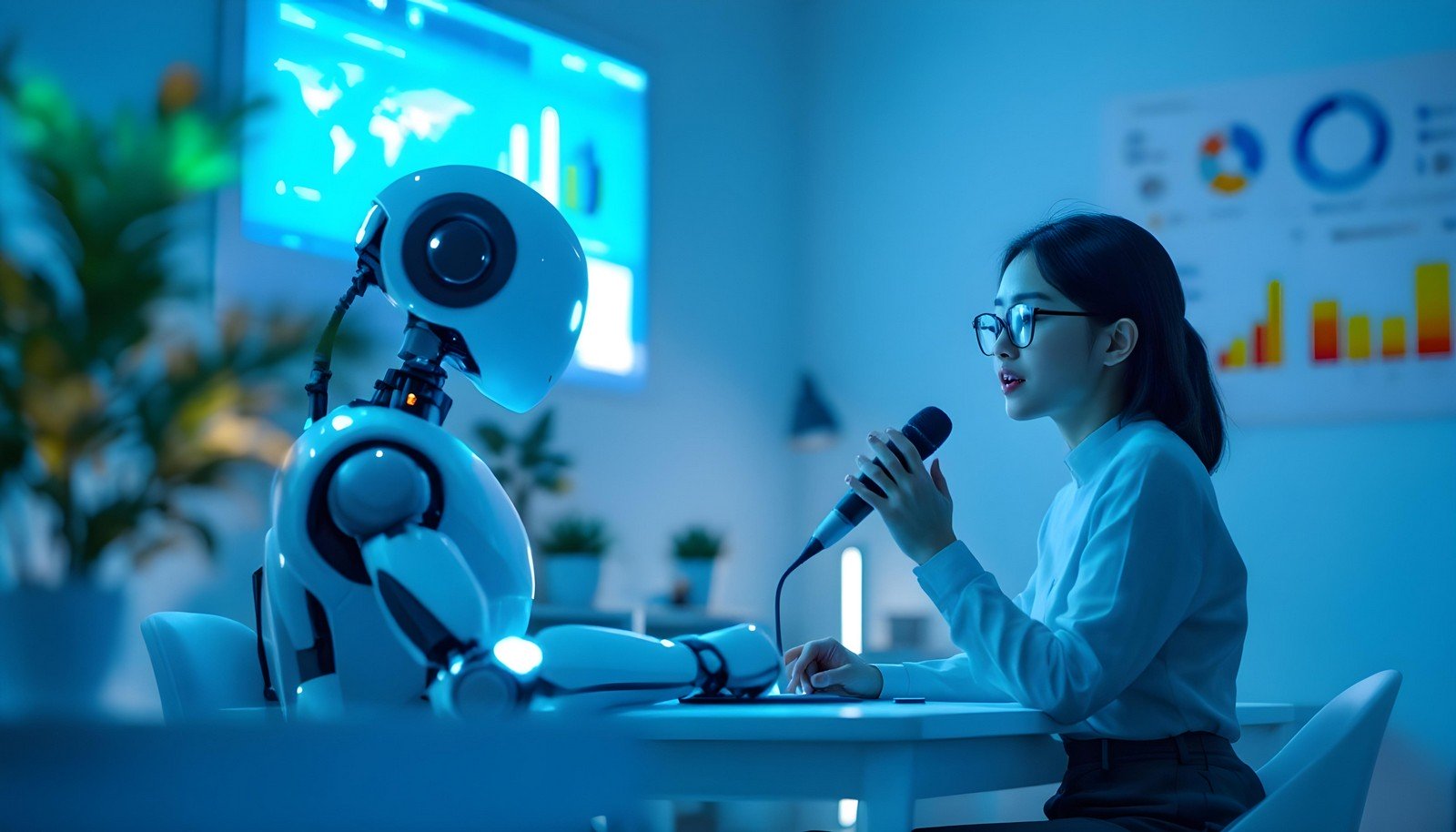AI Speech Recognition

Quick Navigation:
- AI Speech Recognition Definition
- AI Speech Recognition Explained Easy
- AI Speech Recognition Origin
- AI Speech Recognition Etymology
- AI Speech Recognition Usage Trends
- AI Speech Recognition Usage
- AI Speech Recognition Examples in Context
- AI Speech Recognition FAQ
- AI Speech Recognition Related Words
AI Speech Recognition Definition
AI Speech Recognition is a technology that enables a computer or device to understand and process spoken language, converting it into text or executing commands based on the audio input. This involves sophisticated algorithms and machine learning models, particularly natural language processing (NLP) and deep learning, which learn from vast datasets of human speech patterns. These systems recognize various accents, dialects, and intonations, making AI speech recognition versatile for applications like voice search, virtual assistants, transcription services, and more. Key components of AI speech recognition include acoustic models (to understand sounds), language models (to predict possible words), and decoding algorithms (to generate text from audio).
AI Speech Recognition Explained Easy
Imagine you’re talking to a robot, and instead of just listening, it writes down everything you say. AI Speech Recognition works just like that! It’s like a “super listener” that knows lots of words and can even understand different voices and accents. So when you ask it to “play music” or “call mom,” it listens, understands, and does it! It’s a bit like magic, except it’s powered by computers that practice listening a lot to get good at it.
AI Speech Recognition Origin
The development of AI speech recognition dates back to the 1950s when scientists first started experimenting with ways for computers to interpret human speech. Early systems could only recognize single words or a few specific phrases. With advancements in machine learning and computing power, speech recognition made leaps in accuracy and reliability. In the 2000s, with the rise of digital assistants like Siri and Alexa, AI speech recognition became a widely used tool in everyday devices, transforming how people interact with technology.
AI Speech Recognition Etymology
The term “speech recognition” comes from the combination of “speech,” meaning spoken language, and “recognition,” from the Latin "recognitio," which means “to know again” or “to acknowledge.” In this context, “speech recognition” refers to the ability of a system to recognize and understand spoken language.
AI Speech Recognition Usage Trends
AI Speech Recognition has become essential across many fields, from personal devices like smartphones and smart speakers to business solutions in transcription, translation, and customer service automation. With growing demand for contactless and hands-free interactions, the technology’s popularity has surged, especially in healthcare, automotive, and home automation. Innovations like voice biometrics for security and real-time translation have broadened AI speech recognition's applications. As improvements in natural language processing continue, the technology is expected to become even more accurate, adaptive, and integral to future innovations.
AI Speech Recognition Usage
- Formal/Technical Tagging: Speech-to-text, voice command processing, NLP-driven audio analysis
- Typical Collocations: speech recognition system, AI-powered assistant, natural language processing, voice-activated commands, voice-to-text software
AI Speech Recognition Examples in Context
- “AI speech recognition technology allowed the virtual assistant to accurately respond to complex spoken commands.”
- “Using AI speech recognition, the healthcare provider could transcribe patient interactions in real-time.”
- “Thanks to AI speech recognition, customer service calls were transcribed instantly, allowing for more efficient issue resolution.”
AI Speech Recognition FAQ
- What is AI Speech Recognition?
AI Speech Recognition is a technology that converts spoken language into text using machine learning. - How does AI Speech Recognition work?
It uses models trained on human speech to understand sounds and convert them into words. - Where is AI Speech Recognition used?
It’s used in virtual assistants, customer service, healthcare, automotive systems, and transcription services. - Can AI Speech Recognition understand all accents?
Many systems can understand a variety of accents, though accuracy may vary. - Is AI Speech Recognition the same as voice recognition?
No, voice recognition identifies the speaker, while speech recognition understands what is said. - How accurate is AI Speech Recognition?
Modern AI speech recognition can be up to 95% accurate, depending on the system and conditions. - What are some challenges with AI Speech Recognition?
Challenges include background noise, varied accents, and context understanding. - Do all smart devices have AI Speech Recognition?
Most modern smart devices include some form of speech recognition. - Does AI Speech Recognition improve over time?
Yes, it improves with more data and advancements in AI algorithms. - Is my privacy at risk with AI Speech Recognition?
Reputable systems implement strict privacy measures, though users should always review privacy policies.
AI Speech Recognition Related Words
- Categories/Topics: Artificial Intelligence, Natural Language Processing, Machine Learning, Voice Technology
- Word Families: Recognize, Recognition, Recognizable, Recognizably
Did you know?
AI Speech Recognition once faced significant skepticism about its accuracy and practicality. However, in 2017, Google announced that its speech recognition model reached a 95% accuracy level—a milestone matching human recognition in ideal conditions. This success helped change the perception of AI speech recognition from a futuristic novelty to a practical tool, paving the way for widespread adoption.
PicDictionary.com is an online dictionary in pictures. If you have questions or suggestions, please reach out to us on WhatsApp or Twitter.Authors | Arjun Vishnu | @ArjunAndVishnu

I am Vishnu. I like AI, Linux, Single Board Computers, and Cloud Computing. I create the web & video content, and I also write for popular websites.
My younger brother, Arjun handles image & video editing. Together, we run a YouTube Channel that's focused on reviewing gadgets and explaining technology.



Comments powered by CComment